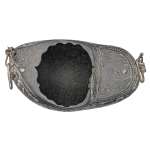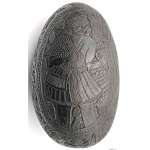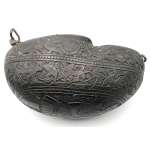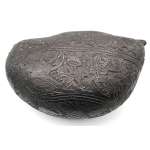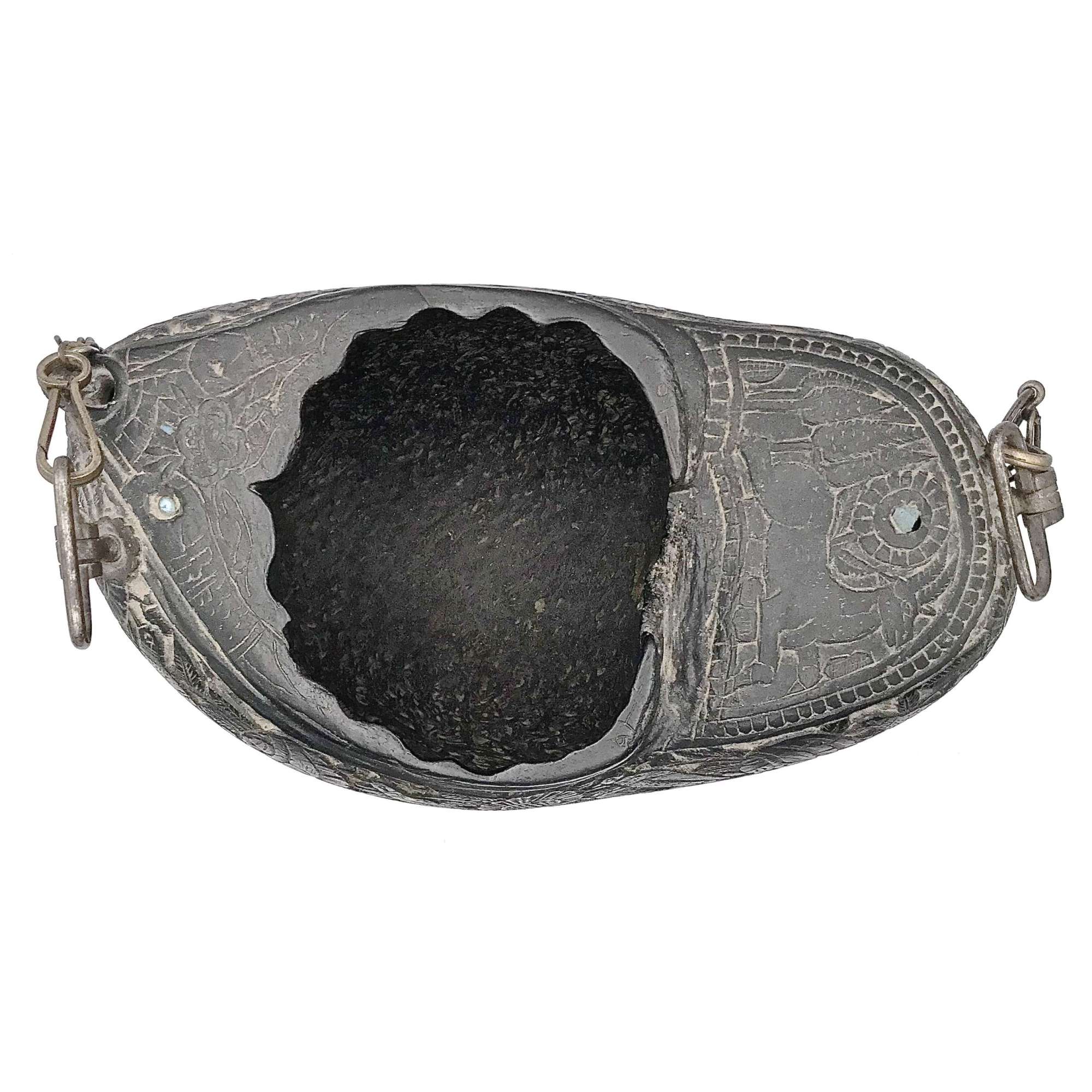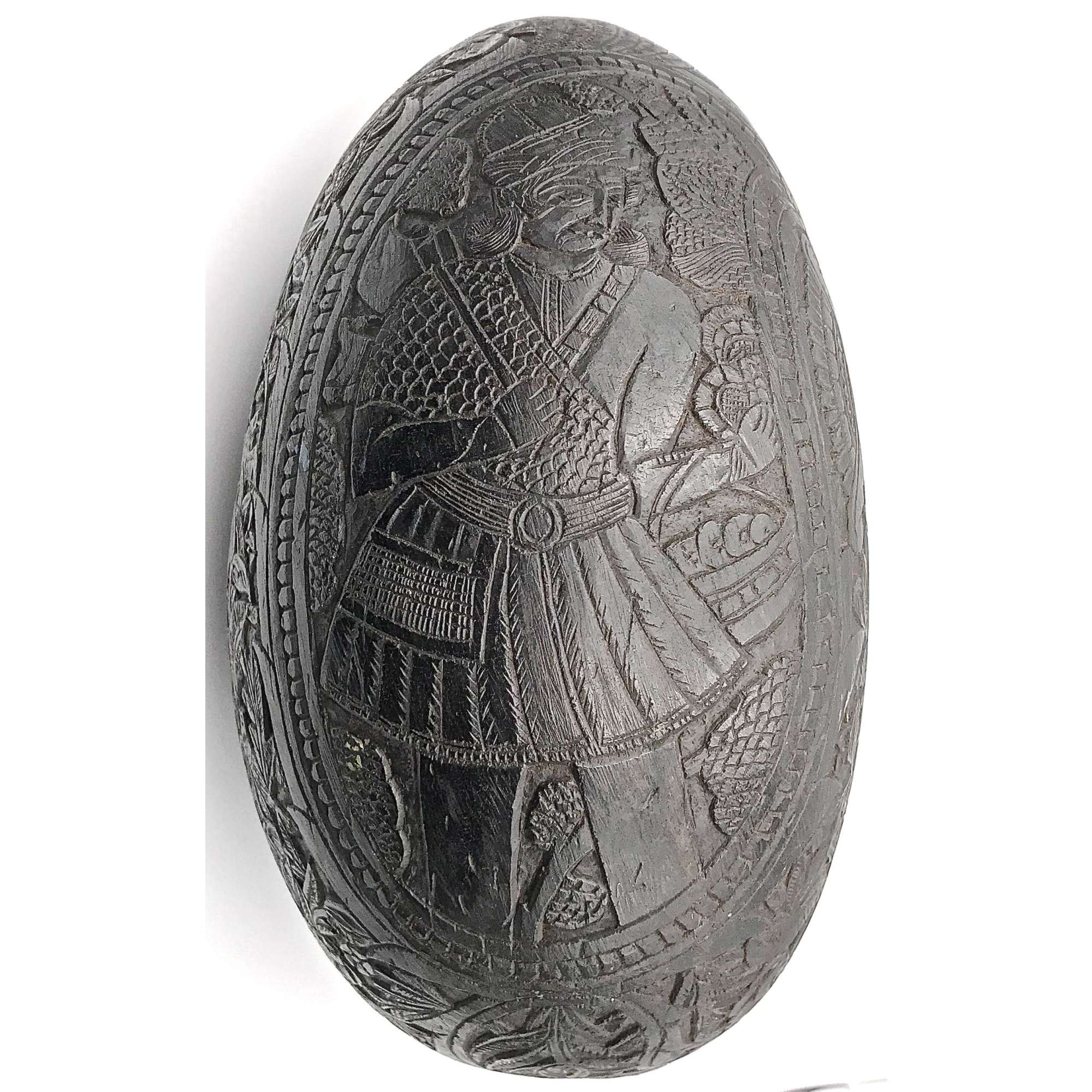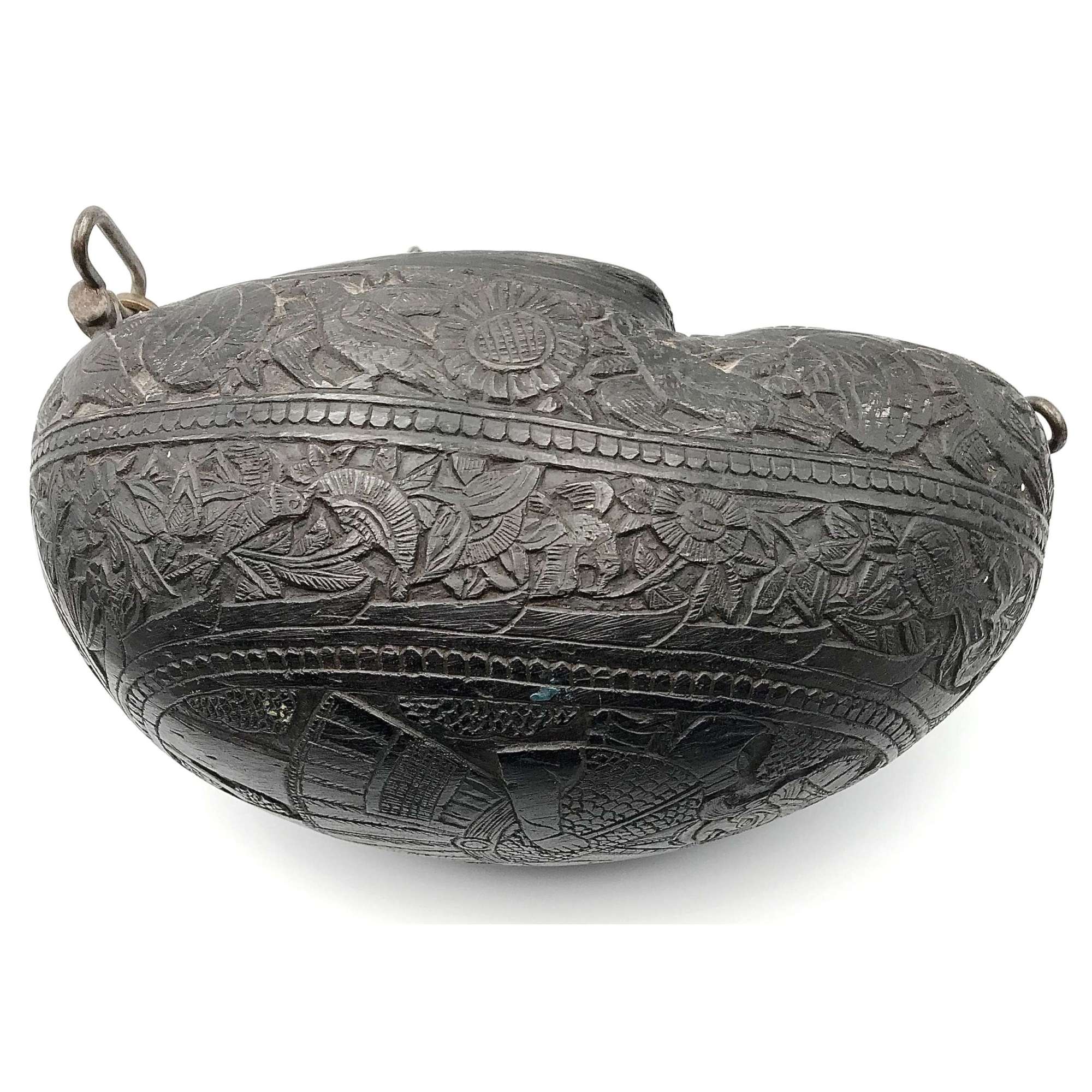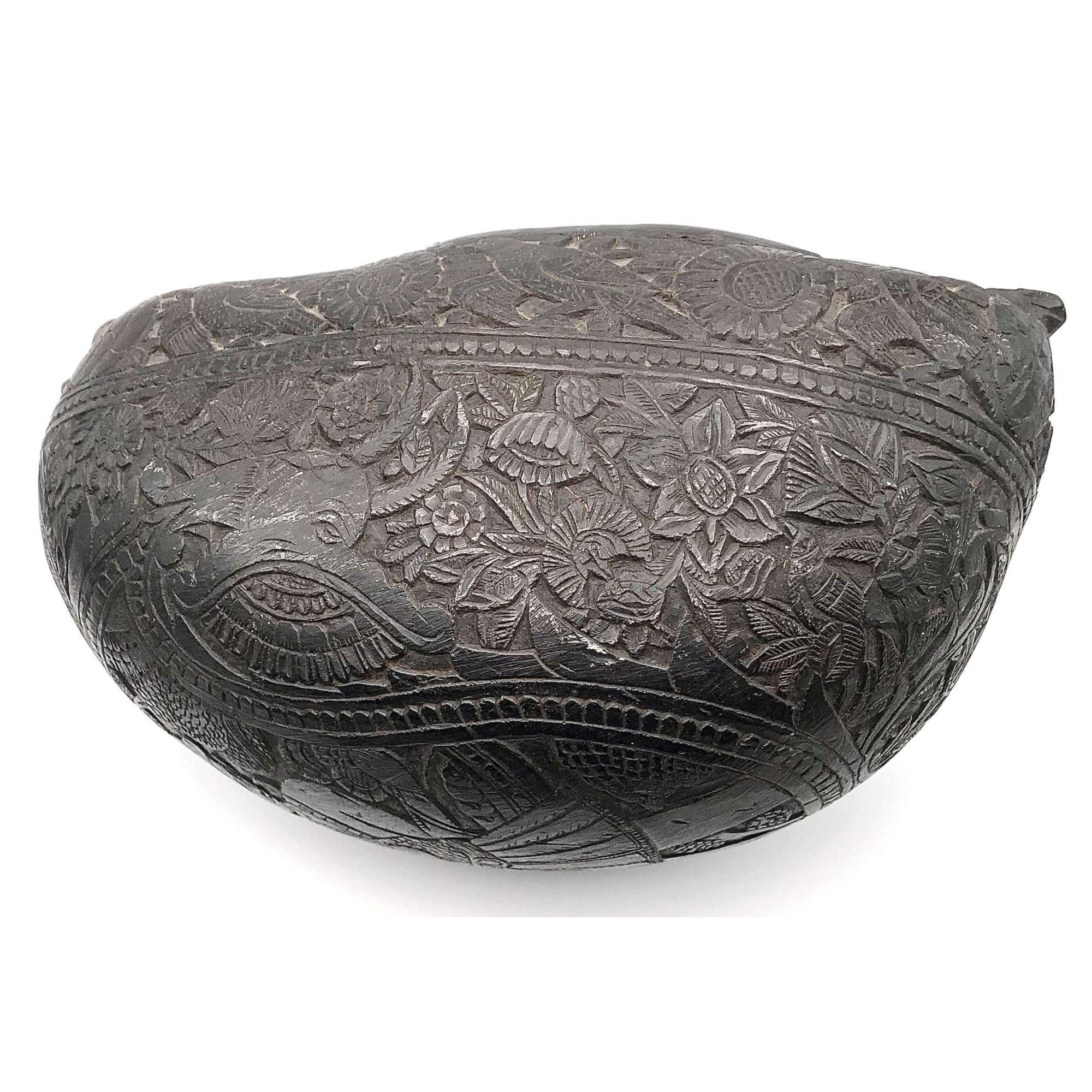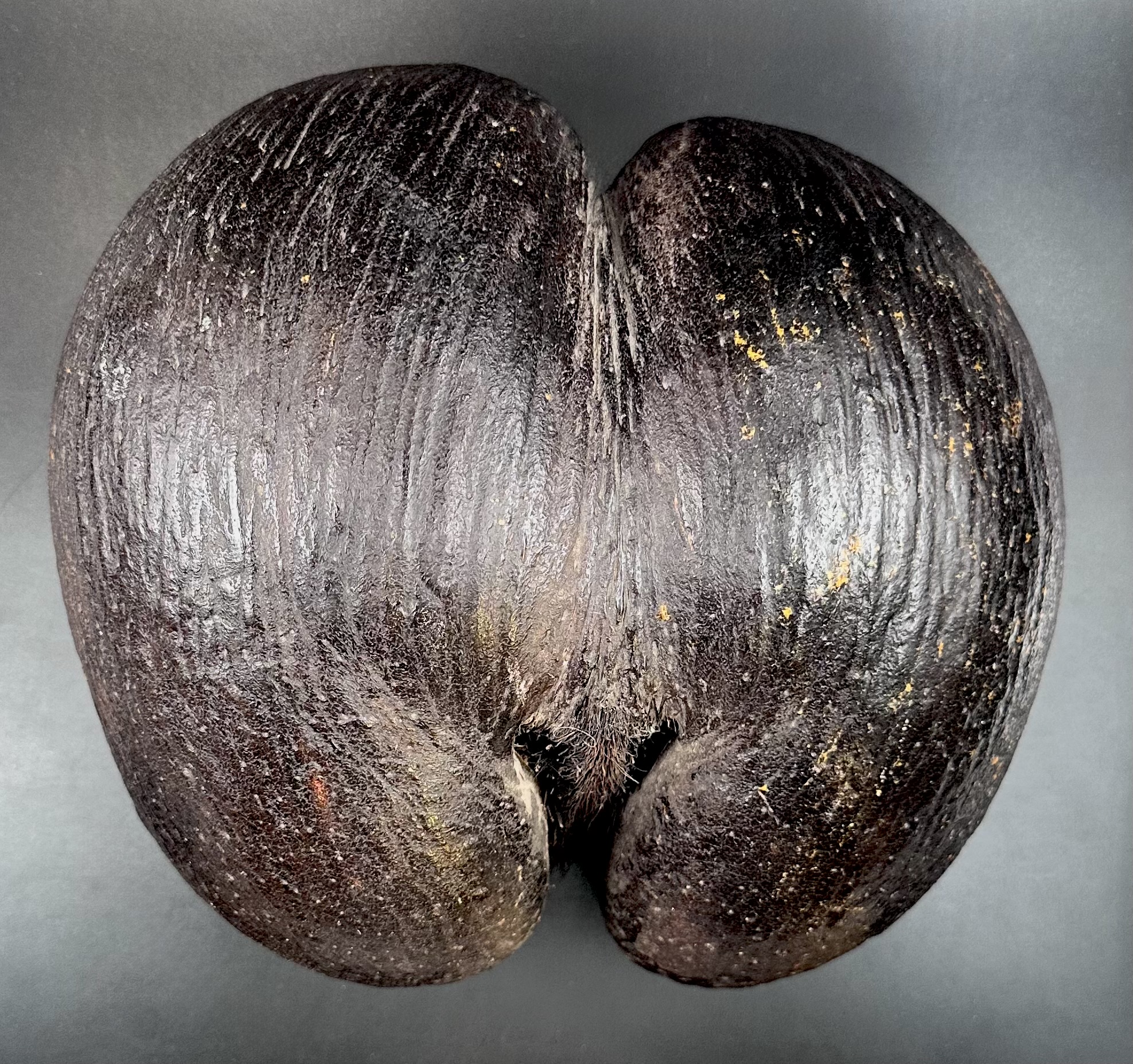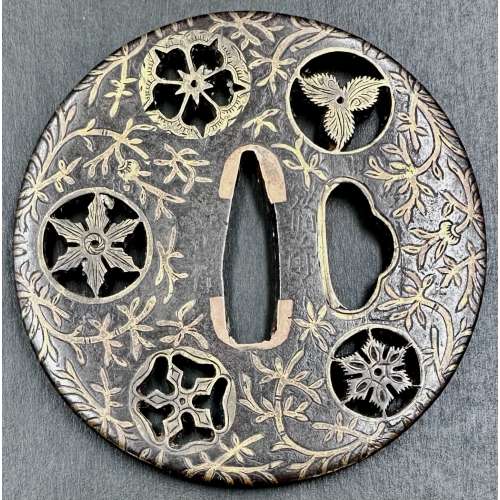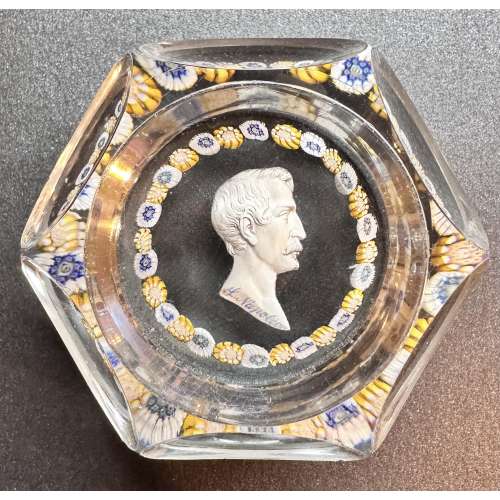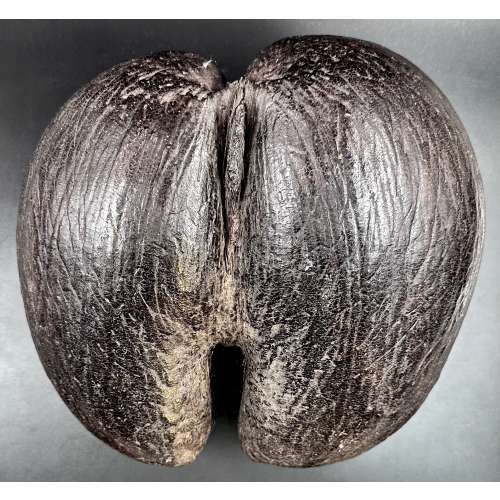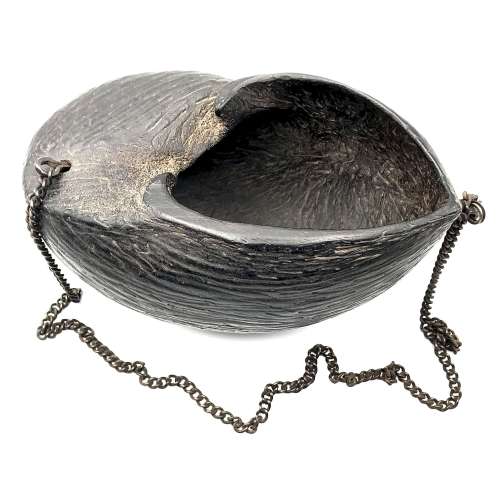Material: Coco de Mer (Lodoicea maldivica) shell with engraved decoration, bronze chain, metal fittings, and inlaid elements
Origin: Likely Persia (Iran)
Date: 19th century
Dimensions: 270 × 150 × 130 mm
Weight: 608 g
This begging bowl (kashkul) is carved from the shell of a Coco de Mer (Lodoicea maldivica) seed, a material historically associated with mysticism and spiritual significance in Persian Sufi traditions. The exterior is intricately engraved with floral motifs, architectural elements, and figural depictions, while a bronze chain is attached via metal loops for carrying or suspension. The bowl retains its natural curvature with a scalloped rim and detailed craftsmanship.
- Floral and Botanical Motifs: Engraved sunflowers, vines, and foliage patterns symbolizing divine wisdom and enlightenment.
- Figural Depiction: One side features a standing figure in military attire, possibly a Persian warrior, historical figure, or Sufi dervish.
- Architectural Details: Arches and ornamental borders suggest Persian or Mughal artistic influences.
- Inlaid Accents: Small inlays of turquoise or glass enhance the visual appeal and craftsmanship.
The kashkul was traditionally used by Sufi dervishes as a symbol of renunciation and humility, carried to receive alms and spiritual offerings. The use of Coco de Mer, a rare and exotic material, elevated the object’s status, making it a prized possession among high-ranking Sufi mystics.
Unlike plain metal kashkuls, which often bore inscriptions of Persian poetry or Quranic verses, this example features extensive figural and architectural designs, suggesting it may have been a presentation or ceremonial piece rather than a simple, functional object. The presence of a bronze chain reinforces its portability and use in daily Sufi practices.
This piece is a rare blend of natural form and intricate artistic craftsmanship, making it a significant example of Persian Sufi material culture.
See Coco de Mer Seed (Lodoicea maldivica) [VO-0474.2024] in this collection.


